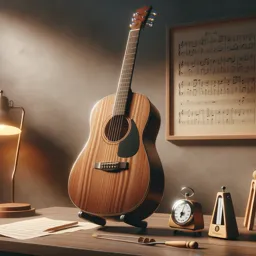As you journey into the world of advanced classical guitar, you’ll encounter techniques and musical approaches that push your technical ability and musical understanding to new heights. Among the most rewarding—and challenging—advanced topics are polyrhythms and counterpoint. Mastery of these elements can dramatically enhance your expressivity and precision as a classical guitarist, opening doors to a wider repertoire and deeper musical communication.
Understanding Polyrhythms
Polyrhythms involve the simultaneous combination of contrasting rhythmic patterns, such as playing three notes against two (3:2), or more complex groupings like five against four (5:4). In classical guitar music, polyrhythms appear in works by composers like Villa-Lobos, Rodrigo, and Brouwer. They create rich layers of texture and drama, but require focused practice to execute cleanly.
Practicing Polyrhythms on Guitar
- Find the Common Pulse: Start by clapping or tapping the underlying pulse that both rhythms share. This will help you internalize the overall timing.
- Isolate Each Rhythm: Practice the simpler rhythm first, then the more complex one, until both feel comfortable.
- Combine Slowly: Using open strings or simple left-hand positions, slowly add both rhythms together, focusing on accuracy over speed.
- Use a Metronome: Set your metronome to the smallest rhythmic subdivision and gradually increase speed.
Exploring Counterpoint on Classical Guitar
Counterpoint is the art of weaving two or more independent melodic lines together. The classical guitar is uniquely suited for this, thanks to its capacity for polyphony. From Bach’s fugues to modern works, counterpoint adds depth, complexity, and beauty to guitar music.
Counterpoint Practice Tips
- Voice Independence: Work on separating the melodies with careful fingerings and dynamics, ensuring each line stands out when necessary.
- Slow Practice: Break down each voice to perfect finger placement and phrasing before attempting full tempo.
- Transcription: Try transcribing simple two-voice inventions (such as Bach’s) to sharpen your understanding of voice leading on the guitar.
Applying Advanced Concepts to Repertoire
To gain fluency with polyrhythms and counterpoint, integrate them into your daily practice and apply them to advanced repertoire. Pieces like Chôros No. 1 by Villa-Lobos or Bach’s Lute Suites are excellent choices. Analyze the score, identify sections with polyrhythms or multiple voices, and isolate these for focused study.
Conclusion
Exploring polyrhythms and counterpoint will not only make you a more rounded classical guitarist, but will also deepen your appreciation of the vast and intricate repertoire available. Commit to patient, mindful practice, and enjoy the process of unraveling the compositional genius of the music you play.

























